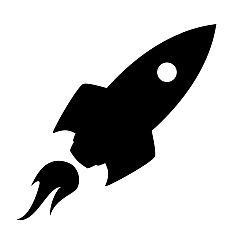Deutsch: Vulcan / Español: Vulcan / Português: Vulcan / Français: Vulcan / Italiano: Vulcan
Vulcan in the space industry refers to the Vulcan Centaur, a next-generation launch vehicle developed by United Launch Alliance (ULA). Vulcan is designed to replace ULA’s Atlas V and Delta IV rockets, offering a more cost-effective, flexible, and powerful solution for launching payloads into various orbits. It plays a critical role in delivering satellites, national security payloads, and deep-space missions, as well as supporting the growing commercial space sector.
Description
Vulcan Centaur is ULA’s response to the evolving demands of the global launch market. As competition intensifies from companies like SpaceX and Blue Origin, ULA developed Vulcan to offer a high-performance, cost-competitive, and reliable launch solution that meets the needs of government and commercial customers.
The Vulcan launch system is based on ULA’s extensive experience with the Atlas V and Delta IV, incorporating modern technologies and materials to improve efficiency and reduce launch costs. Vulcan Centaur is a two-stage rocket, featuring:
- First Stage (Core Booster): Powered by two BE-4 engines, developed by Blue Origin, burning liquefied natural gas (methane) and liquid oxygen. These engines deliver high thrust and are part of ULA’s effort to move away from reliance on Russian RD-180 engines.
- Second Stage (Centaur V): An upgraded version of ULA’s reliable Centaur upper stage, featuring two RL10 engines. Centaur V offers high efficiency and multiple restart capability, essential for complex missions and precise satellite deployments.
One of Vulcan’s defining features is its modular design, allowing for different payload configurations and optional solid rocket boosters (SRBs) to enhance lift capability. Depending on the mission requirements, Vulcan can lift up to 27,200 kilograms (60,000 pounds) to low Earth orbit (LEO) and 6,500 kilograms (14,300 pounds) to geosynchronous transfer orbit (GTO).
Vulcan Centaur is designed with reusability in mind through ULA’s SMART (Sensible, Modular, Autonomous Return Technology) initiative. Instead of recovering entire rocket stages, SMART focuses on reusing the expensive engine section of the first stage by detaching it after use, shielding it during re-entry, and recovering it mid-air.
Vulcan is central to ULA’s role in the US National Security Space Launch (NSSL) program, providing heavy-lift services for the Department of Defense (DoD) and other government missions. It is also a key player in NASA missions, with Vulcan selected to launch payloads under NASA’s Commercial Lunar Payload Services (CLPS) program, including robotic landers to the Moon.
Vulcan’s development represents a major shift for ULA, moving towards American-made engines, reducing costs, and increasing launch cadence to stay competitive in the modern space industry landscape. The rocket is expected to launch its first mission in 2024, following multiple delays related to BE-4 engine development and payload readiness.
Special Features of Vulcan Centaur
Special Considerations in Reusability and Engine Development
Vulcan’s BE-4 engine selection is a significant move away from the RD-180, ensuring greater independence from foreign suppliers. Methane fuel improves engine reusability potential, aligning with industry trends towards next-generation propellants.
The SMART reuse program is distinctive, focusing on recovering only the engine section rather than the entire booster. This approach aims to lower costs while maintaining simplified operations, reducing the complexity associated with full rocket stage landings.
Vulcan’s Centaur V upper stage is designed for high-energy missions, capable of multiple burns for deep space exploration, lunar missions, and large satellite deployments.
Application Areas
- National Security Space Launch (NSSL): Delivering military and intelligence payloads for the US Department of Defense.
- Commercial Satellite Launches: Deploying communication, navigation, and Earth observation satellites for commercial customers.
- NASA Science Missions: Supporting missions under NASA’s CLPS program and other deep-space science initiatives.
- Lunar Exploration: Launching lunar landers and cargo as part of NASA’s Artemis program and private lunar missions.
- Space Logistics and Servicing: Future missions may include satellite servicing, in-space refuelling, and logistics support.
Well-Known Examples
- First Vulcan Centaur Mission (Cert-1): Scheduled to carry Astrobotic’s Peregrine lunar lander to the Moon under NASA’s CLPS program, marking Vulcan’s maiden flight.
- Sierra Space Dream Chaser Launch: Vulcan is slated to launch Dream Chaser spaceplane missions to the ISS, providing cargo resupply services.
- USSF-106 and USSF-87: ULA has contracts to launch national security missions for the US Space Force using Vulcan.
Risks and Challenges
- BE-4 Engine Delays: Development challenges at Blue Origin caused multiple schedule shifts, affecting Vulcan’s first flight timeline.
- Competition: Vulcan faces intense market competition from SpaceX’s Falcon 9 and Falcon Heavy, which offer reusability and lower costs.
- Reusability Limitations: The SMART system’s effectiveness and cost-saving potential remain unproven in operational missions.
- Launch Market Dynamics: Changing government priorities, satellite mega-constellations, and shifts towards smaller payloads impact demand for heavy-lift launch vehicles.
Similar Terms
- Atlas V: ULA’s earlier workhorse rocket, being phased out as Vulcan becomes operational.
- Delta IV Heavy: Another ULA heavy-lift vehicle, gradually replaced by Vulcan Centaur.
- BE-4 Engine: The methane-fuelled engine developed by Blue Origin, powering Vulcan’s first stage.
- Reusable Launch Vehicles (RLVs): A growing class of launch vehicles, including Vulcan, Falcon 9, and New Glenn, designed for partial or full reusability.
Summary
Vulcan Centaur is United Launch Alliance’s next-generation launch vehicle, combining high performance, cost efficiency, and modern technology to meet the growing demands of government and commercial space customers. With its advanced engines, modular architecture, and planned reusability, Vulcan is poised to play a key role in national security launches, lunar exploration, and commercial satellite deployment.
--
